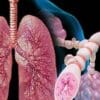Understanding Bronchial Asthma: Triggers, Tips, and Technology for Better Breathing
Introduction
Asthma, a chronic respiratory condition, affects millions worldwide, with a significant number residing in India. Understanding what triggers bronchial asthma attacks can be a game-changer for those trying to manage the condition effectively. This comprehensive guide will explore the common triggers of asthma and how a holistic approach through technology, such as the Fitpaa app, can support better management and enhance quality of life.
What Triggers Bronchial Asthma Attacks?
Asthma is characterized by inflammation and narrowing of the airways, leading to symptoms like wheezing, coughing, shortness of breath, and chest tightness. Identifying and managing triggers is crucial for controlling asthma. Here are some of the common triggers:
1. Allergens: In India, common allergens include pollen from trees, grass, and weeds, dust mites, mold, animal dander, and cockroach droppings. These can provoke asthma symptoms and lead to attacks.
2. Air Pollution: Urban environments often have elevated levels of pollutants like vehicle emissions, industrial waste, and smoke. These pollutants can irritate the airways and exacerbate asthma.
3. Weather Changes: Sudden changes in weather, particularly colder air, can trigger asthma attacks. Humidity and heat can also affect breathing patterns.
4. Respiratory Infections: Viral infections like the common cold or flu can worsen asthma symptoms. It’s crucial to maintain good hygiene and possibly get vaccinated against preventable diseases.
5. Exercise: Physical activity, especially in cold air, can trigger exercise-induced bronchoconstriction. However, with the right management plan, exercise can still be part of a healthy lifestyle.
6. Emotional Stress: Strong emotions and stress can lead to hyperventilation and subsequently trigger or worsen asthma symptoms.
7. Foods and Additives: Some individuals might react to certain foods, preservatives, or additives, which can potentially trigger asthma attacks.
8. Smoking: Both active and passive smoking significantly increases the risk of severe asthma symptoms.
Managing Asthma with Technological Support: The Fitpaa Approach
While recognizing triggers is pivotal, managing asthma effectively often requires a comprehensive plan. The Fitpaa app provides a holistic approach to health and wellness, offering personalized solutions for those managing asthma.
– Personalized Fitpaa Capsule: This includes tailored exercise plans, diet recommendations, and stress management techniques to optimize overall health and reduce asthma symptoms.
– Real-time Guidance: Leveraging Fitpaa’s cutting-edge technology, users receive reminders and motivational prompts to adhere to their health plan, ensuring consistency and effectiveness.
– Monitoring and Adjustments: Regular check-ins through the app allow you to track your progress and adjust plans as needed under the guidance of a dedicated health team, ensuring your asthma management plan is always aligned with your current needs.
Conclusion
Asthma doesn’t have to control your life. By understanding triggers and utilizing technology like the Fitpaa app, you can manage your symptoms effectively and enjoy a better quality of life. Whether it’s through personalized health plans or continuous support, the right tools can make a world of difference. Download the Fitpaa app today, and take a confident step towards breathing easier and living healthier.









